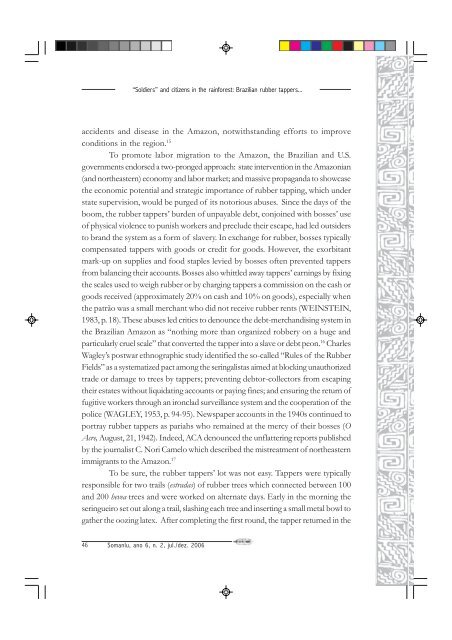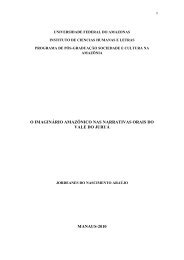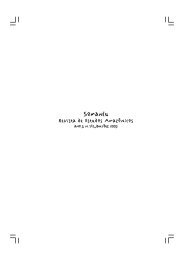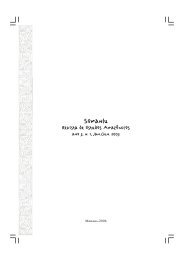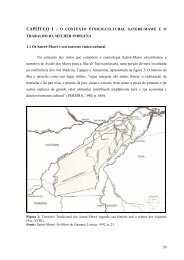somanlu jul dez 2006.pmd - Eventos - Ufam
somanlu jul dez 2006.pmd - Eventos - Ufam
somanlu jul dez 2006.pmd - Eventos - Ufam
Create successful ePaper yourself
Turn your PDF publications into a flip-book with our unique Google optimized e-Paper software.
“Soldiers” and citizens in the rainforest: Brazilian rubber tappers...<br />
accidents and disease in the Amazon, notwithstanding efforts to improve<br />
conditions in the region. 15<br />
To promote labor migration to the Amazon, the Brazilian and U.S.<br />
governments endorsed a two-pronged approach: state intervention in the Amazonian<br />
(and northeastern) economy and labor market; and massive propaganda to showcase<br />
the economic potential and strategic importance of rubber tapping, which under<br />
state supervision, would be purged of its notorious abuses. Since the days of the<br />
boom, the rubber tappers’ burden of unpayable debt, conjoined with bosses’ use<br />
of physical violence to punish workers and preclude their escape, had led outsiders<br />
to brand the system as a form of slavery. In exchange for rubber, bosses typically<br />
compensated tappers with goods or credit for goods. However, the exorbitant<br />
mark-up on supplies and food staples levied by bosses often prevented tappers<br />
from balancing their accounts. Bosses also whittled away tappers’ earnings by fixing<br />
the scales used to weigh rubber or by charging tappers a commission on the cash or<br />
goods received (approximately 20% on cash and 10% on goods), especially when<br />
the patrão was a small merchant who did not receive rubber rents (WEINSTEIN,<br />
1983, p. 18). These abuses led critics to denounce the debt-merchandising system in<br />
the Brazilian Amazon as “nothing more than organized robbery on a huge and<br />
particularly cruel scale” that converted the tapper into a slave or debt peon. 16 Charles<br />
Wagley’s postwar ethnographic study identified the so-called “Rules of the Rubber<br />
Fields” as a systematized pact among the seringalistas aimed at blocking unauthorized<br />
trade or damage to trees by tappers; preventing debtor-collectors from escaping<br />
their estates without liquidating accounts or paying fines; and ensuring the return of<br />
fugitive workers through an ironclad surveillance system and the cooperation of the<br />
police (WAGLEY, 1953, p. 94-95). Newspaper accounts in the 1940s continued to<br />
portray rubber tappers as pariahs who remained at the mercy of their bosses (O<br />
Acre, August, 21, 1942). Indeed, ACA denounced the unflattering reports published<br />
by the journalist C. Nori Camelo which described the mistreatment of northeastern<br />
immigrants to the Amazon. 17<br />
To be sure, the rubber tappers’ lot was not easy. Tappers were typically<br />
responsible for two trails (estradas) of rubber trees which connected between 100<br />
and 200 hevea trees and were worked on alternate days. Early in the morning the<br />
seringueiro set out along a trail, slashing each tree and inserting a small metal bowl to<br />
gather the oozing latex. After completing the first round, the tapper returned in the<br />
46 Somanlu, ano 6, n. 2, <strong>jul</strong>./<strong>dez</strong>. 2006


